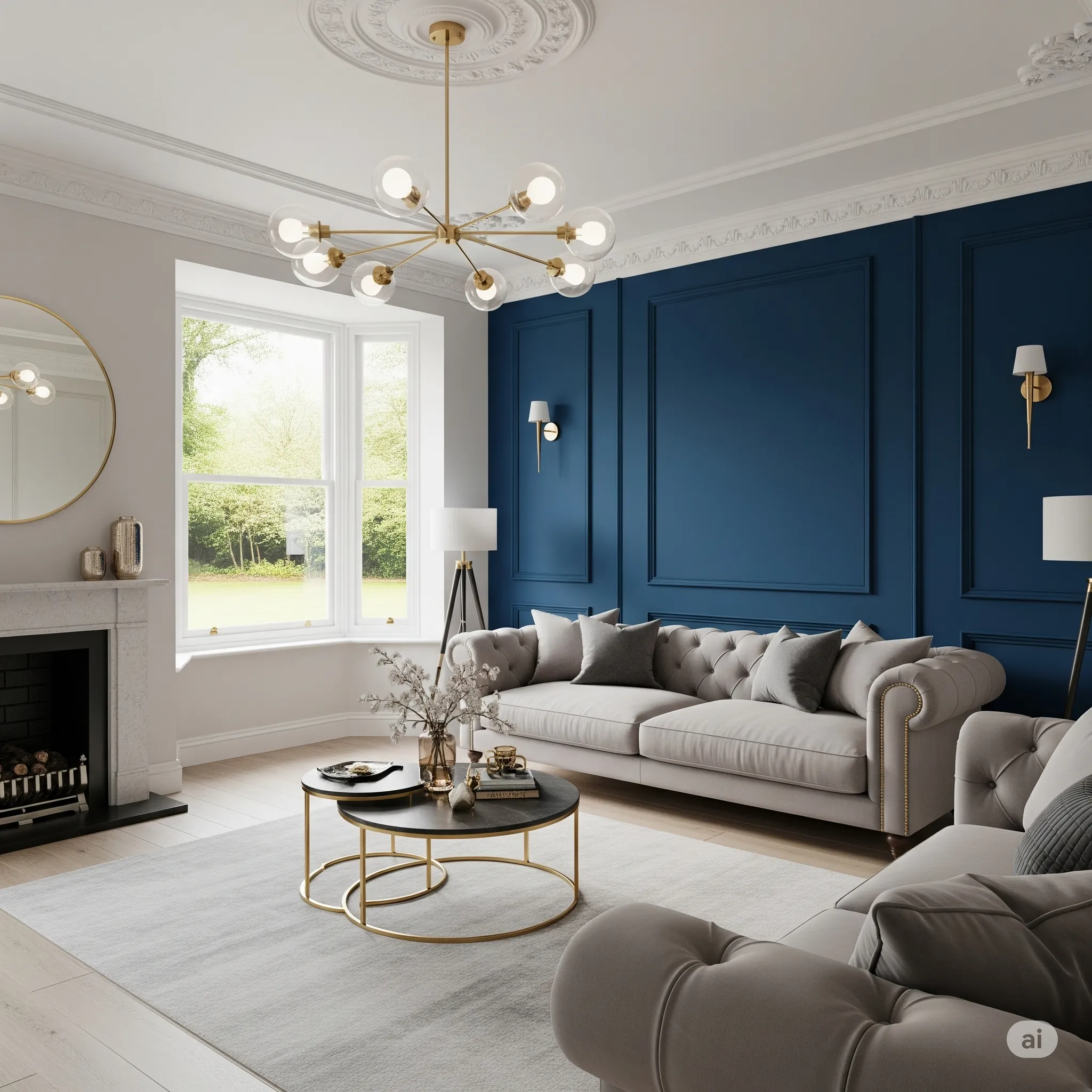Accent walls are one of the easiest and most effective ways to add personality, depth, and style to a room. By highlighting just one wall with color, texture, or pattern, you can create a focal point that draws attention and sets the mood. Whether you want to make a bold statement or subtly enhance your space, an accent wall can transform an otherwise neutral room into something truly memorable. In this guide, we’ll explore how to design the perfect accent wall for your home, with tips on placement, materials, colors, and style.
What Is an Accent Wall?
An accent wall is a single wall within a room that’s designed to stand out from the others. This can be achieved through:
- Paint
- Wallpaper
- Textured finishes (like wood, brick, or stone)
- Wall panels
- Murals or art
Accent walls add visual interest, define zones, and offer a chance to experiment with style without committing to a full-room transformation.
Choose the Right Wall
The most important part of creating an accent wall is choosing the right one to highlight. A well-chosen wall enhances the room’s structure and flow.
Best Walls to Accent:
- The wall behind your bed: Natural focal point in bedrooms.
- A fireplace wall: Draws attention to the room’s architectural centerpiece.
- The sofa wall in a living room: Frames the seating area.
- A dining area wall: Defines the eating space in open layouts.
- Entryway or hallway wall: Adds drama and interest to transitional areas.
Avoid accenting walls with too many doors or windows, as this can disrupt the effect.
Pick a Style That Matches the Room
Your accent wall should complement the existing decor and color scheme, not clash with it. Consider your room’s function, design style, and overall color palette.
Accent Wall Styles by Room:
- Modern: Use bold paint colors, geometric wallpaper, or sleek panels.
- Rustic: Try reclaimed wood planks or brick textures.
- Scandinavian: Opt for muted tones, light wood, or minimalistic patterns.
- Boho: Choose natural materials, woven wall hangings, or murals.
- Glam: Think metallics, mirrors, or rich wallpaper with gold accents.
Always choose materials and designs that reflect your personality and the mood you want to create.
Use Paint for a Quick Transformation
Paint is the easiest and most affordable way to create an accent wall. The right color can completely shift the atmosphere of a room.
Paint Color Tips:
- Use dark, rich tones (like navy, charcoal, forest green) for depth and drama.
- Try warm hues (like terracotta, mustard, or deep burgundy) to add warmth.
- Use soft pastels (like sage, blush, or pale blue) for a soothing effect.
- Stick with matte or eggshell finishes for a modern, subtle look.
Test samples before committing, and consider how light affects the color throughout the day.
Experiment with Wallpaper or Wall Murals
Wallpaper and murals let you introduce pattern, texture, and bold design elements without taking up any physical space.
Popular Wallpaper Styles:
- Botanical prints for a nature-inspired look.
- Geometric patterns for modern or art deco themes.
- Textured wallpapers like grasscloth or faux brick.
- Peel-and-stick wallpaper for renters or temporary updates.
Murals work especially well in kids’ rooms, creative studios, or spaces where you want to tell a story.
Add Texture for Depth
Textured accent walls create a tactile element and enhance the room’s dimension. These finishes can add warmth and character to an otherwise flat space.
Textured Wall Ideas:
- Wood Slats or Shiplap: Adds rustic or coastal charm.
- Stone or Brick Veneer: Great for industrial or farmhouse styles.
- Wall Panels or Moldings: Elevates classic and transitional interiors.
- 3D Panels: Adds visual intrigue in modern spaces.
Combine texture with color for maximum effect, such as dark-painted wood panels or whitewashed brick.
Try Bold Tile in Unexpected Places
Tile isn’t just for bathrooms and kitchens—it can be used as a stunning accent wall too.
Tile Accent Ideas:
- Use subway tiles in a home office for a clean, urban look.
- Try patterned cement tiles for an eclectic feel in dining rooms.
- Use glossy or mosaic tiles to reflect light and add sparkle in smaller rooms.
This approach is especially useful in areas where durability and easy cleaning are important.
Use Art and Gallery Walls as an Accent
If you don’t want to commit to permanent changes, a well-curated art wall can serve as a visual focal point.
Art Wall Tips:
- Use matching frames for a clean, uniform look.
- Mix sizes and styles for a more dynamic, eclectic display.
- Incorporate mirrors, shelves, and 3D objects for texture.
- Align the gallery around a central theme or color scheme.
This flexible option allows for frequent updates and personalization.
Keep Balance in the Room
While accent walls should stand out, they shouldn’t overwhelm the space. Maintain visual balance by keeping surrounding walls more neutral and limiting other competing focal points.
Balancing Tips:
- Repeat your accent color in smaller decor items (pillows, rugs, artwork).
- Keep furniture simple near a bold wall.
- Use lighting to highlight the accent without overpowering the room.
Balance ensures that your accent wall enhances the space without dominating it.
Final Thoughts: Express Yourself with Confidence
Accent walls are a powerful way to bring life, emotion, and individuality into your home. With the right materials, placement, and design, you can create a feature that anchors your room, showcases your style, and makes every space more dynamic.
Whether you choose a bold color, textured wood, or patterned wallpaper, let your accent wall tell a story—and reflect who you are.
